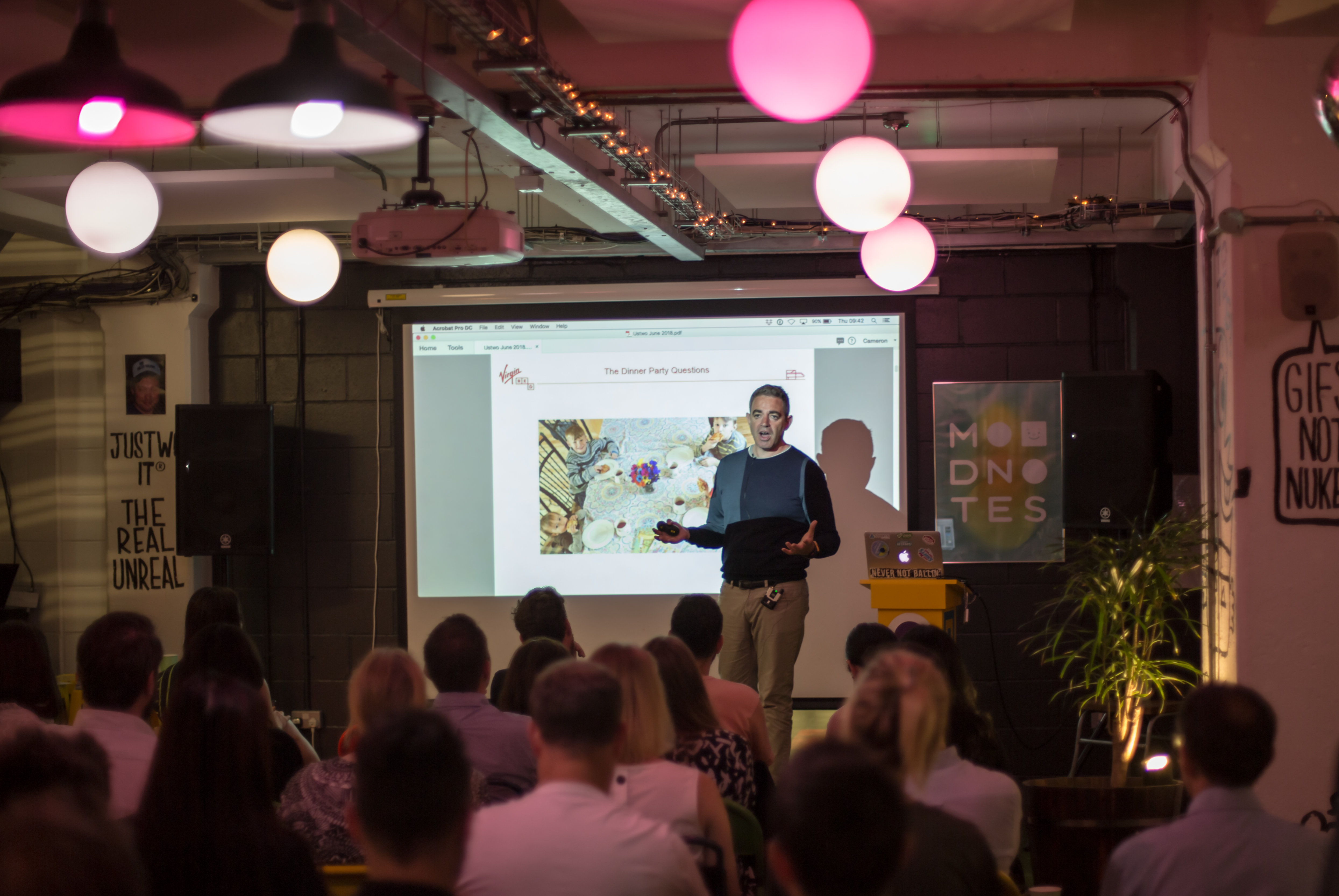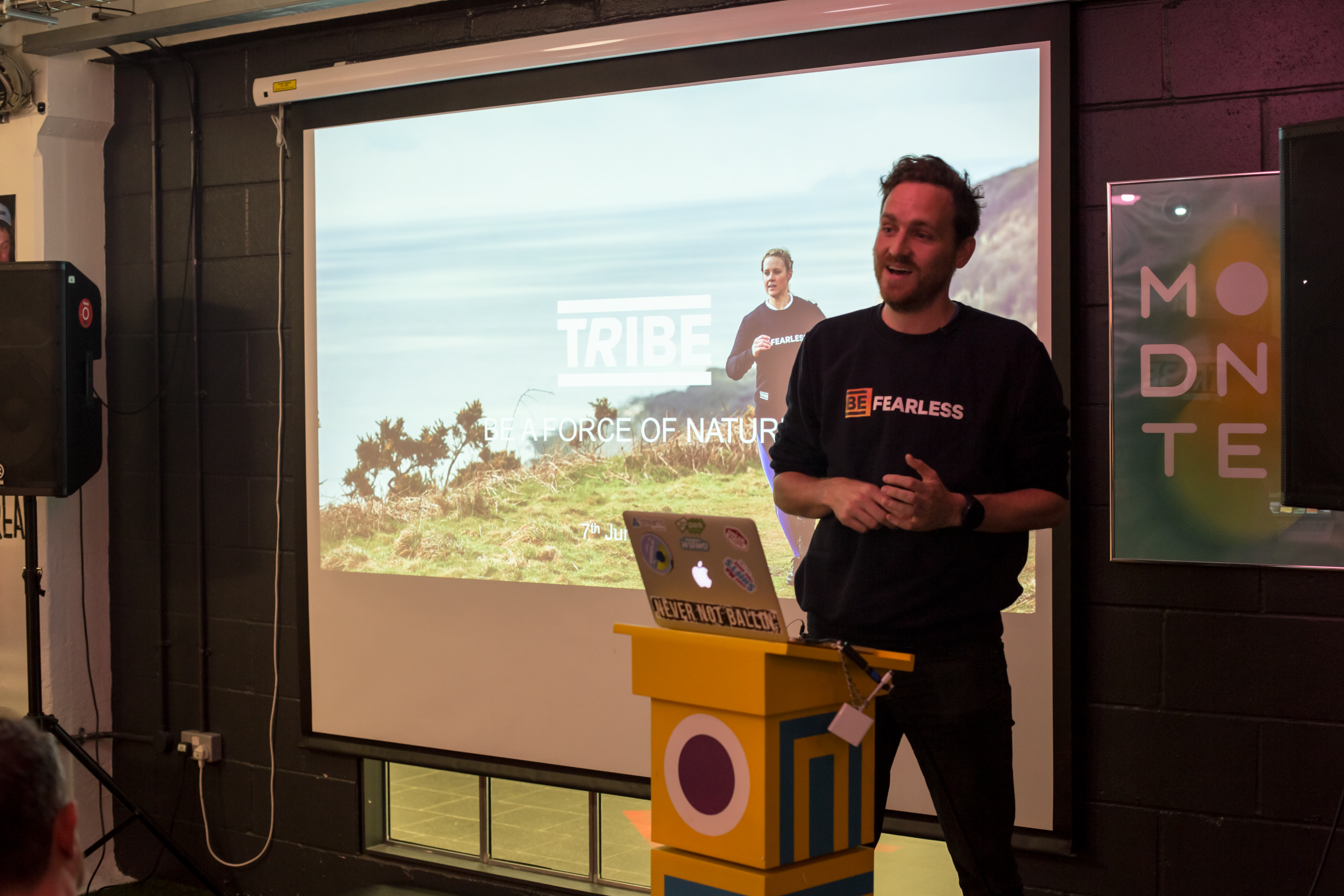Gone are the days when loyalty was a simple plastic card that rewarded customers based solely ontransactions, and ‘rewards’ simply consisted of homogeneous discounts and offers.
With consumer expectations evolving, it’s no longer a one size fits all approach and the new norm ispersonalised experiences. It is time to re-think loyalty. The latest ‘ustwoThinks: The Future of Loyalty’ event brought together expert speakers to discuss and share their predictions on the future of loyalty: James Tipple, Managing Director of Virgin Red (loyalty program across all Virgin brands), James Higgs, Technical Director of ustwo, Guy Hacking, Co-Founder of TRIBE and Jasmine Skee, Director of Proposition at Three UK.

Loyalty Evolution
James Tipple, MD of Virgin Red, believes that the loyalty sector “needs to change in the UK because expectations of benefits have increased beyond traditional currency.” The key to retaining customers is rewarding people not just for transacting with your brand but by “being more ‘Virgin”. As James said, “The more ‘Virgin’ you become, the better the experience gets.”
Users value an authentic experience and want a unique way to be engaged with loyalty programs. Introducing things like gamifying data capture, where customers can earn points and unlock relevant content through topical or brand quizzes, and running reverse auctions with prizes such as flight upgrades can go a long way in retaining customers.
In a digital-first world, customers expect everything to be frictionless. Brands like Sephora, who offer a seamless, omni-channel experience for customers, moving users from channel to channel and retaining all the data and experiences is key. As James from Virgin Red notes, “Why are we still using pieces of plastic in loyalty programmes? Get it all on mobile.”
Get the Tech Right
James Higgs, ustwo’s Technical Director believes that “a lot of tech needs to go in the bin”, and outlines ways in which technology can be harnessed successfully to help brands discover new ways forward.
1. An experimental mindset and the infrastructure to support it.
“Instead of an 18-month project, you need multiple teams experimenting at the same time, and some of those teams will fail. And the tech approach really matters – you need to engineer for malleability and experimentation. You need to have an experimental mindset- if you have multiple checkpoints in your organisation then you’re not going to compete with the likes of Amazon.”
2. Own the technology that differentiates you.
"If you really want to stand out in terms of loyalty, you can’t rebadge what everyone else is using. Don’t be seduced by supposedly cutting-edge tech and remember, to use the Amazon Prime example, that the innovation isn’t the drone, it’s the platform on which it can operate. The vast majority of this tech is, and should be, ‘boring’. It’s the ability to be nimble as a massive organisation that drives that tech. If loyalty is crucial to you, then you can’t use an off-the-shelf loyalty programme, you have to build your own.”
3. Invest in user research, not market research.
You need to explore irrational behaviour, which is hard to do through market research because it demands introspection. You’re asking people what they might do, and they can’t tell you about their own irrationality. Instead observe their behaviour via prototypes, analytics, and alpha tests. You can see this happening around you with the likes of Deliveroo, Netflix, Booking.com, and Airbnb. Everytime I go on Deliveroo they’ve changed something, they have a platform on which they can constantly test.”
If there’s one thing to take out, James believes it’s understanding that, “When you’re looking at Amazon, think about deep innovation over two decades, not the surface executions like Alexa and the Dash button. The ‘boring’ platform is the thing that enables that.”
Focus on the User
When developing digital products and platforms, issues can arise when brands hear the ‘minimum’ in the Minimum Viable Product (MVP), and not the all important ‘viable’, and the focus should always be around testing everything you build. Jasmine Skee, Director of Proposition at telco Three UK, who worked with ustwo on developing a loyalty app while at Harvey Nichols, was surprised at how many assumptions they had had as a brand about what a loyalty programme can be. “Working with customers, building a prototype, was great because sometimes the problem as marketers is you can spend six months on something without speaking to the customers.”
The importance of user testing is underlined by the fact that you can never predict what problems or solutions your users can unearth with your product.
Jasmine said, “When we asked customers if they would use the app, 80% said yes, and 20% no. But talking with them we learned that this was because they were worried that it would use too much memory on the phone, or that the battery would go flat. So it became about delivering a customer experience to answer these concerns.”

Emotional Connection
The hot topic in loyalty is that transactional rewards are dead, with the focus being on fostering an emotional connection between brands and customers. Starbucks’ loyalty programme for example, is transactional at its core, however they have integrated customer experience and emotional engagement into the platform, such as pre-ordering coffee before they arrive. They have thought about how they can make their customers’ lives better and more enjoyable, and have connected that with their brand.
Guy Hacking, one of the co-founders of TRIBE Sports Nutrition, talked about the brand’s origins in the ‘Run for Love’ 1,000 mile challenge to end modern slavery, and the £250,000 that was subsequently raised for the cause. The TRIBE nutrition products business, which has backers including ustwo, was not planned at the time but evolved from the energy bars that Guy and his co-founders were making to help them compete.
Guy said, “We don’t want to be another commoditised brand, another chocolate or energy bar stacked on shelves. We’re trying to build a community of engaged individuals, not only because they like the product but because they have emotional engagement.”
TRIBE built a community and inspired loyalty by involving their customers in their business decisions. 10,000 of its 50,000 community contributed to a new product development initiative, and more than 5,000 members provided their input on a rebrand.
Brands also need to consider developing partnerships with relevant brands that will resonate with their community and provide special experience’s money can’t buy; for example TRIBE partnering with Nike, Rapha and Asics for access to sold out events.
Engage Beyond Price
So how do you keep customers engaged with your brand, loyalty programme and products, when the competition over price is at the top of every customer’s mind?
Virgin Red know that every time a customer receives a yearly membership renewal notice they jump onto price comparison websites. While price is one way to compete, James Tipple, Head of Virgin Red believes that offering access and benefits to being part of the wider Virgin Group; whether that be discounts on airfares, shopping, and exclusive experiences is a major drawcard for those who are looking to switch. Understanding what members really want and how you can partner with affiliates to deliver those everyday rewards, goes a long way for companies who operate on bigger ticket products and can’t always offer a free flight as an incentive or reward.
On a recent family trip to Rome, James Tipple spent time at the ancient Roman Forum, where people congregated for a range of social activities. He reflected that, “a loyalty programme should be a Forum, where your customers go to hang out, and you understand what members and partners want, and then hook them up with tailored experiences.”
